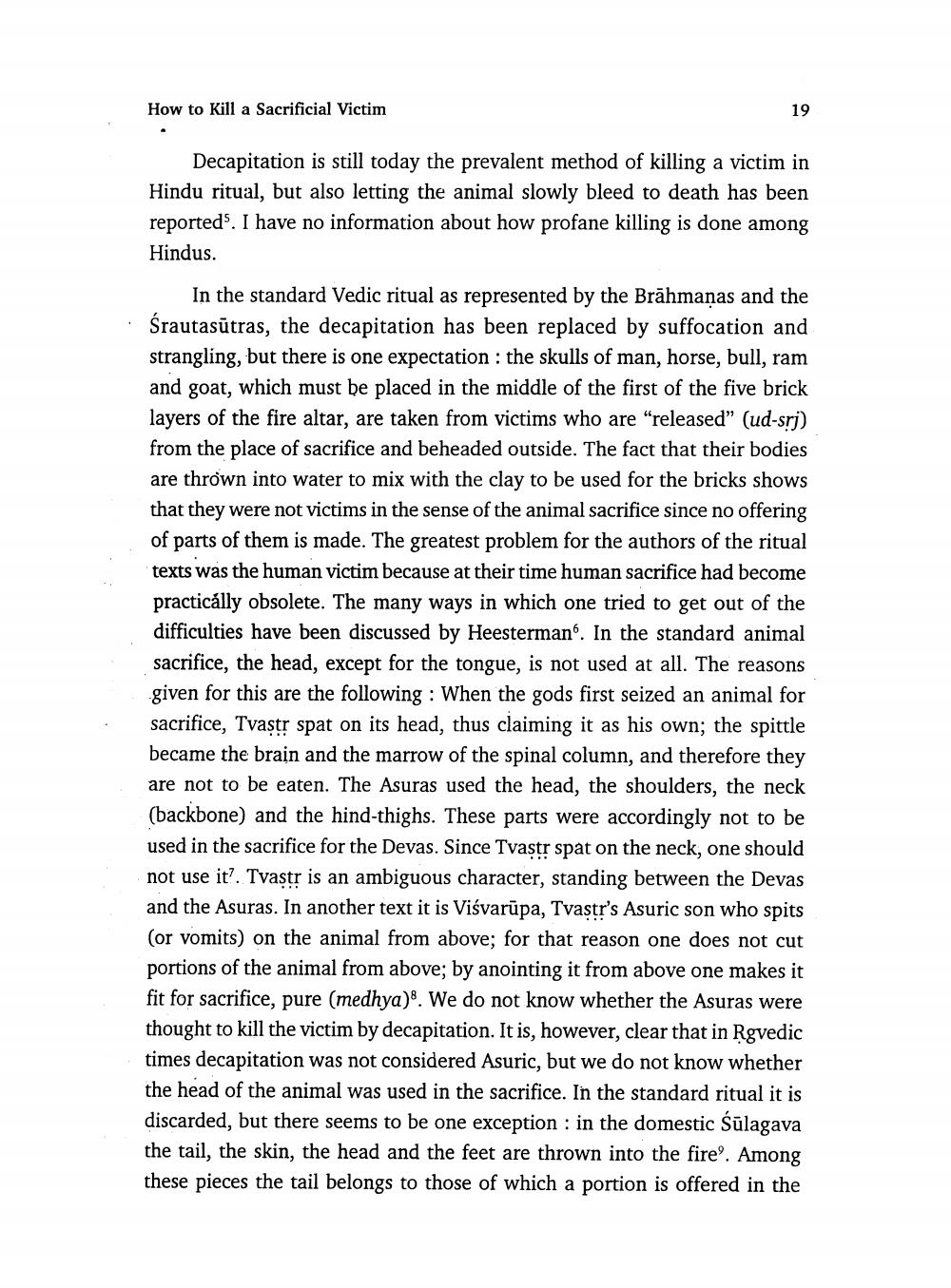________________
How to Kill a Sacrificial Victim
19
Decapitation is still today the prevalent method of killing a victim in Hindu ritual, but also letting the animal slowly bleed to death has been reporteds. I have no information about how profane killing is done among Hindus.
In the standard Vedic ritual as represented by the Brahmanas and the Śrautasūtras, the decapitation has been replaced by suffocation and strangling, but there is one expectation: the skulls of man, horse, bull, ram and goat, which must be placed in the middle of the first of the five brick layers of the fire altar, are taken from victims who are "released" (ud-srj) from the place of sacrifice and beheaded outside. The fact that their bodies are thrown into water to mix with the clay to be used for the bricks shows that they were not victims in the sense of the animal sacrifice since no offering of parts of them is made. The greatest problem for the authors of the ritual texts was the human victim because at their time human sacrifice had become practically obsolete. The many ways in which one tried to get out of the difficulties have been discussed by Heesterman". In the standard animal sacrifice, the head, except for the tongue, is not used at all. The reasons given for this are the following: When the gods first seized an animal for sacrifice, Tvastr spat on its head, thus claiming it as his own; the spittle. became the brain and the marrow of the spinal column, and therefore they are not to be eaten. The Asuras used the head, the shoulders, the neck (backbone) and the hind-thighs. These parts were accordingly not to be used in the sacrifice for the Devas. Since Tvastr spat on the neck, one should not use it?. Tvastr is an ambiguous character, standing between the Devas and the Asuras. In another text it is Viśvarupa, Tvastr's Asuric son who spits (or vomits) on the animal from above; for that reason one does not cut portions of the animal from above; by anointing it from above one makes it fit for sacrifice, pure (medhya)". We do not know whether the Asuras were thought to kill the victim by decapitation. It is, however, clear that in Rgvedic times decapitation was not considered Asuric, but we do not know whether the head of the animal was used in the sacrifice. In the standard ritual it is discarded, but there seems to be one exception: in the domestic Śülagava the tail, the skin, the head and the feet are thrown into the fire. Among these pieces the tail belongs to those of which a portion is offered in the




